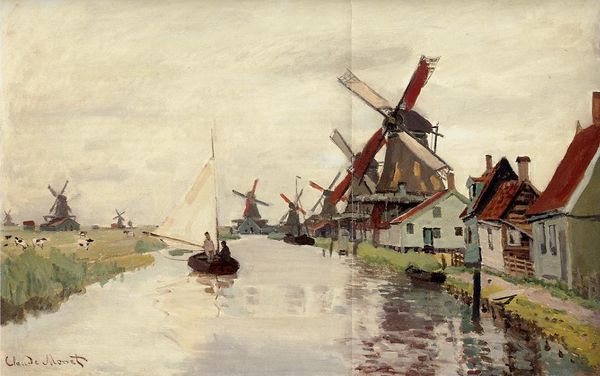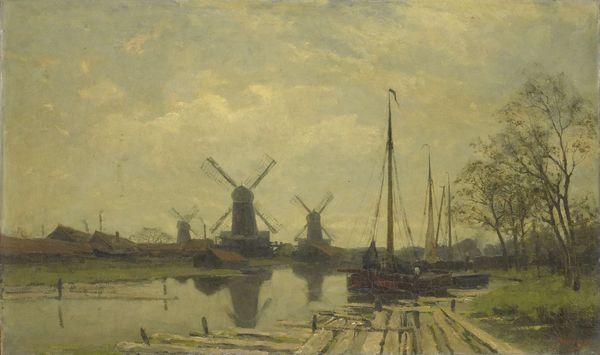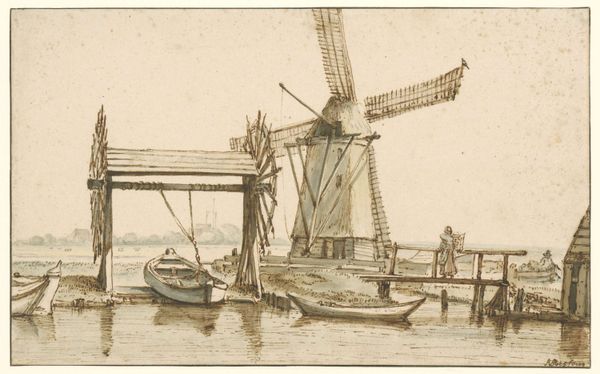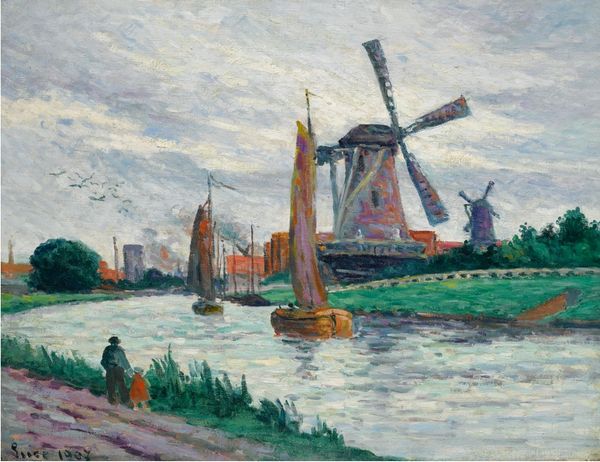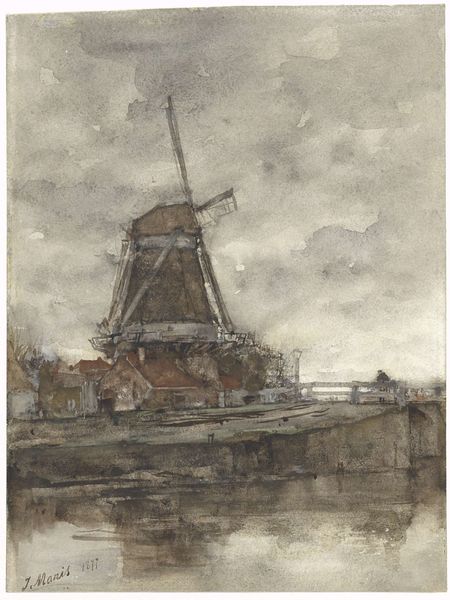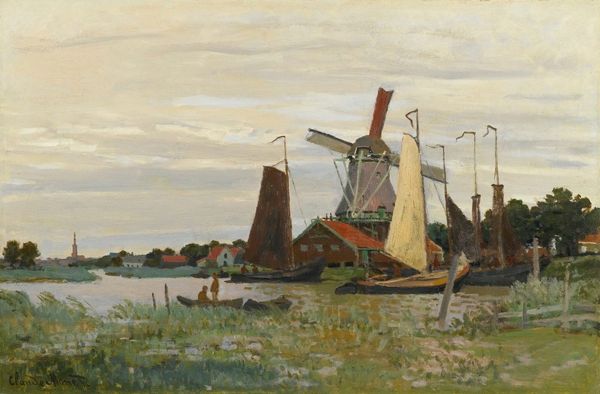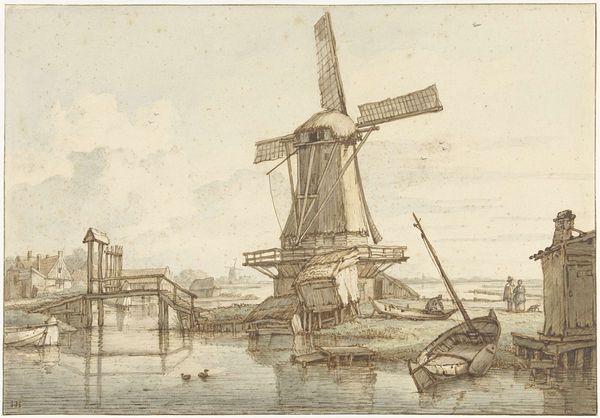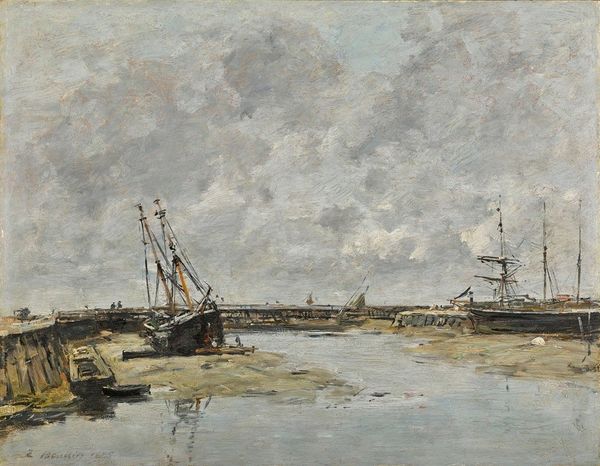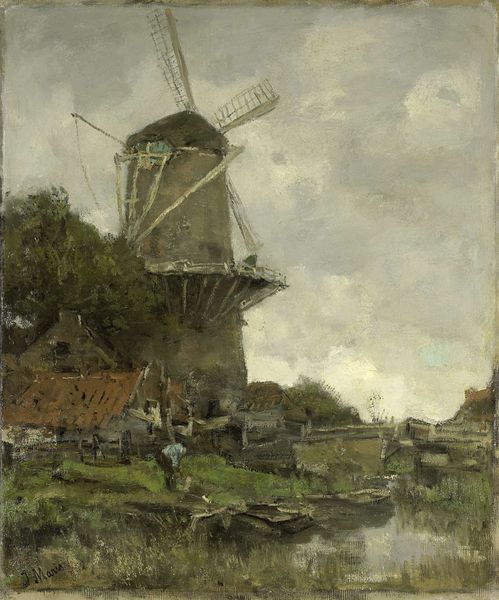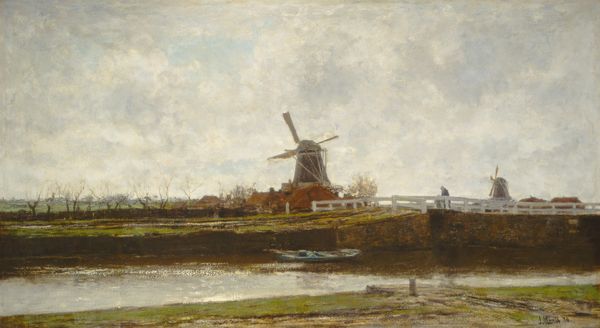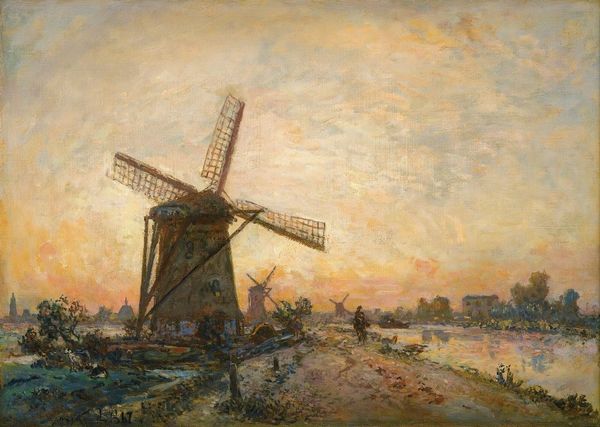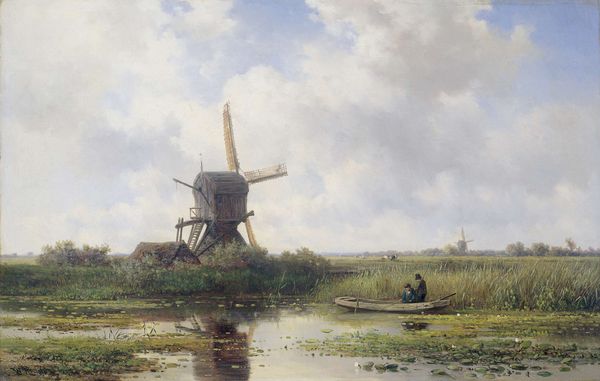
plein-air, oil-paint
#
dutch-golden-age
#
impressionism
#
plein-air
#
oil-paint
#
landscape
#
oil painting
#
cityscape
Copyright: Public Domain: Artvee
Curator: Here we see Claude Monet's "Mills at Westzijderveld near Zaandam," created in 1871 using oil paint. It’s quite an early Impressionist work, focusing on the industrial landscape of the Netherlands. Editor: It's striking, almost bleak. The palette is very muted, dominated by grays and browns, save for those pops of orange on the windmill vanes. There's something very melancholic about it, even with all those repeating forms of windmills suggesting production. Curator: The windmills themselves carry a great deal of symbolism. They are reminders of a traditional way of life slowly yielding to industrial advancement, reflecting the transitions occurring in Europe at the time. You also notice the small bridge. Figures cross the structure but they are barely seen and only give scale to the industrial complex. Editor: Interesting how he reduces everything to its most basic form and materiality, emphasizing the wood and function of windmills. Those bright blades almost feel like crude afterthoughts, rudimentarily placed on these hulking industrial forms. It pulls me back to the fact that everything, even high art, has humble roots in human labor and material transformation. How were these colors actually produced? Curator: Monet chose to paint this en plein air, directly from life, trying to capture the ephemeral quality of the light and atmosphere, a trademark of the Impressionists, moving away from Dutch Golden Age's idealized scenes. The mills stand tall, reflecting a certain amount of industrious ambition, yet painted so ethereally as to convey transience. Perhaps reflecting how industries can appear imposing but prove temporary. Editor: Seeing these forms painted with such loose brushwork also reinforces the feeling of ephemerality. This bridge may seem sturdy in terms of supporting those human figures, but those buildings in the distance might soon be gone with the winds. Curator: Indeed. In a way, Monet immortalized a moment of profound transformation, imbuing these structures with an almost spiritual resonance. Editor: Yes, it seems to present an almost paradoxical image: industry caught within the fleeting qualities of light and atmosphere, yet captured as something both temporary and monumental. A great thing for materialist readings to reflect upon.
Comments
No comments
Be the first to comment and join the conversation on the ultimate creative platform.
